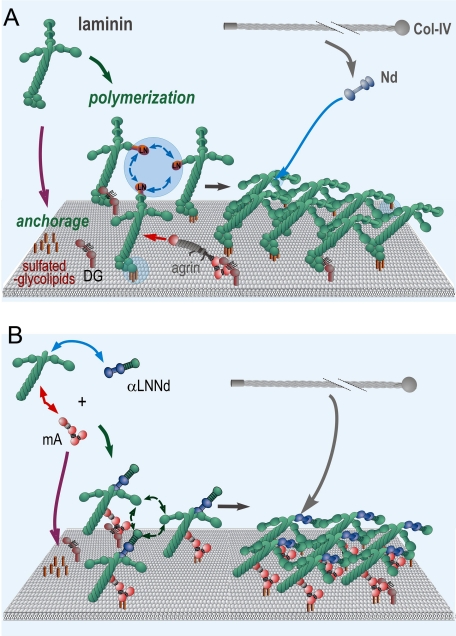FIGURE 10.
Basement membrane assembly mediated by intact and polymer/adhesion-deficient laminins. A working model is shown based upon the findings of this and our previous studies. Panel A, laminins (e.g. 111, 211) become anchored through their LG (primary interactions) and αLN (secondary interactions) domains to cell surface sulfatides (abundant) and dystroglycan (less abundant). The α, β, and γ LN domains of different laminin molecules bind to form a polymer. Type IV collagen molecules associate with the laminin polymer primarily through the bridging activity of nidogens, enabling formation of a collagen co-polymer. Panel B, a laminin-deficient in polymerization (here with only two short arms) and cell adhesion activity (here absence of LG domains) could only polymerize if provided synthetic linker proteins with the missing polymerization (αLNNd) and anchoring (mA) activities.

